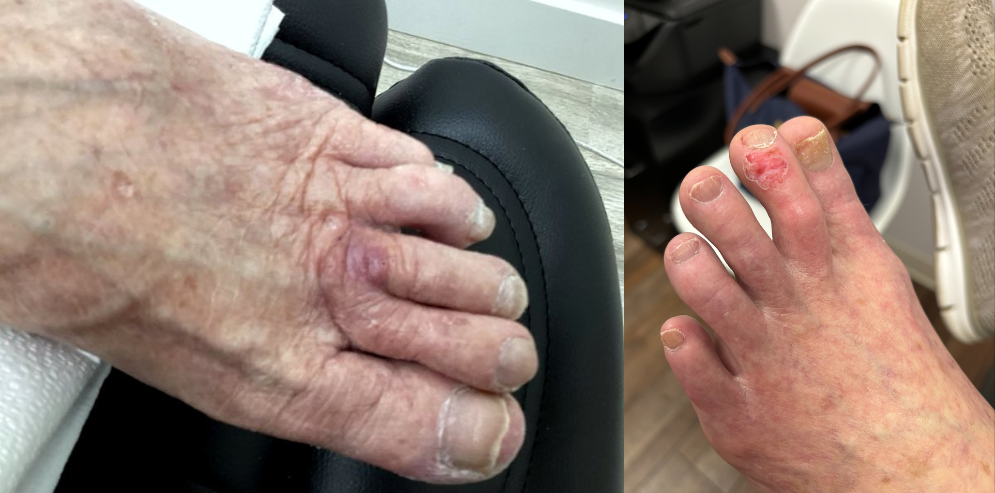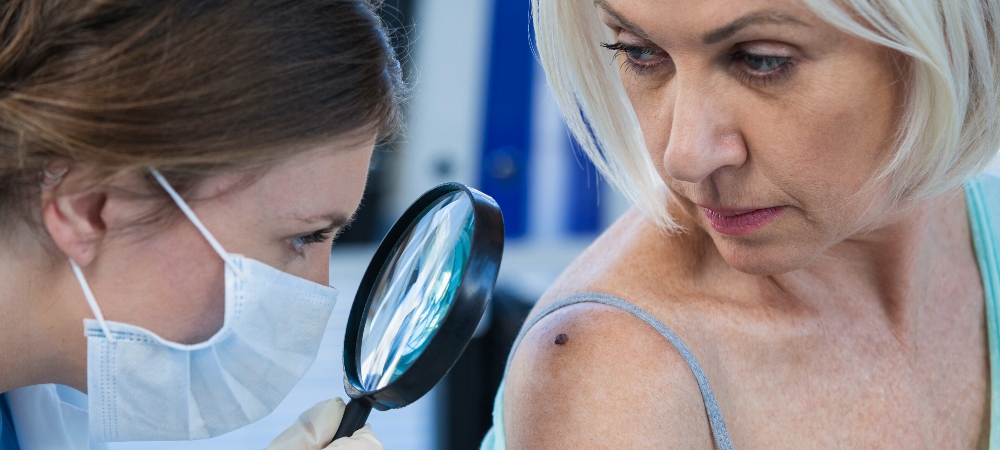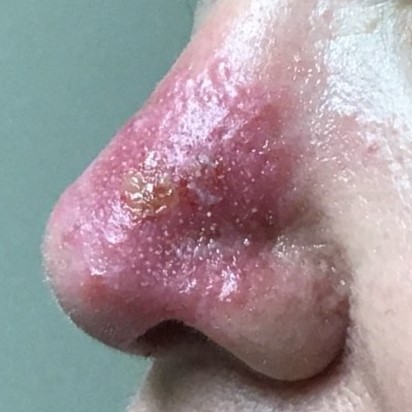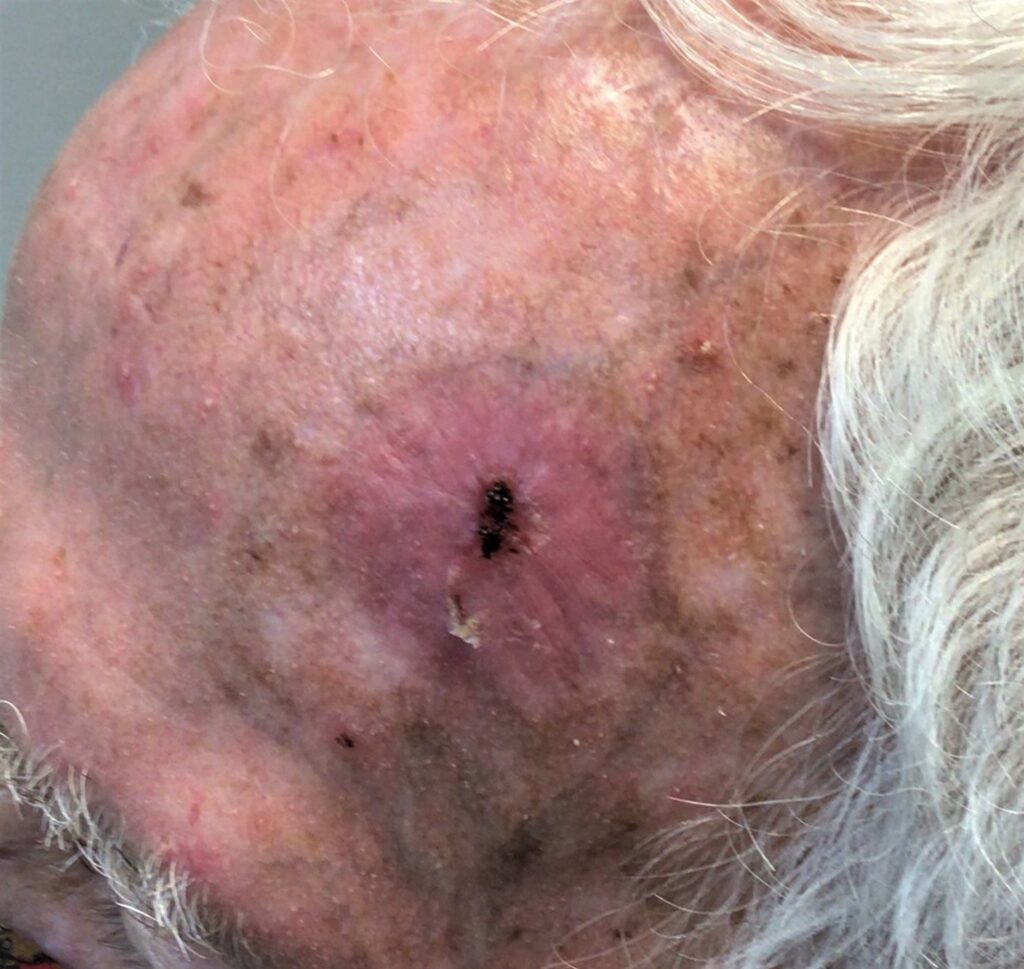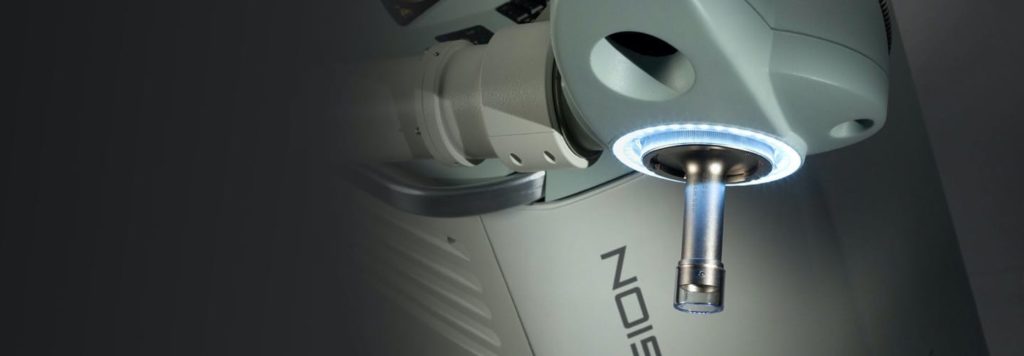
As with every treatment for people with cancer, there may be side effects that can be different for each person, but it’s important to know that the benefits of the treatment are usually much greater than the side effects. Superficial radiation therapy is a non-surgical outpatient procedure designed to treat basal cell and squamous cell skin cancers without cutting into the skin. This painless, surgery-free treatment is just as effective as the traditional Mohs surgery but comes with much better cosmetic results. There are minimal to no Image-Guided SRT treatment side effects, making it an exceptional option for those who qualify.
How Does Superficial Radiation Therapy Work?
Superficial radiation therapy works by targeting small amounts of energy just below the skin’s surface, focusing only on the affected tissue. Unlike Mohs surgery, which cuts deep into the skin to remove cancerous tissue and the surrounding areas, superficial radiation therapy works without:
- Cutting
- Surgical scarring
- The need to stop taking blood thinners or antibiotics
- Limits to daily activities
Most people with skin cancer who choose superficial radiation therapy schedule a series of short, pain-free appointments over a series of weeks. Superficial radiation therapy does take longer than surgery, but there are no limits to daily activities, and you won’t need to follow up with cosmetic surgeons to address scarring. Once the treatment schedule is completed, you’ll continue regular screenings to ensure you’re cancer-free.
What are the Side Effects of Image-Guided SRT?
Common Side Effects
Most people who are treated with Image-Guided SRT may experience mild to moderate side effects. These effects can occur anytime during treatment but generally occur later in treatment and after treatment is complete. These might include:
- Skin irritation
- Redness (like a sunburn)
- Thinning of the skin that is treated
These side effects can be treated by a doctor and usually go away within 2 to 6 weeks after treatment ends.
In some cases, the treated skin might become darker or lighter, and within the treatment field there will be permanent hair loss.
Rare Side Effects
While rare, there are some more serious side effects that can happen:
- A skin ulcer (open sore) that doesn’t heal
- Another cancer may form in the same area 20 to 40 years after treatment
However, these side effects are very unusual.
Why Image-Guided SRT is a Good Choice
One of the best things about Image-Guided SRT is that it doesn’t leave scars like other treatments, such as surgery. Many skin cancers happen in visible areas like the face, head, and neck, and people often worry about how they’ll look after their treatment. Mohs surgery can leave deep scars that might be painful, but superficial radiation therapy doesn’t hurt and doesn’t leave permanent scars.
How to Care for Skin After Treatment
Even though the side effects are usually mild, there are simple ways to take care of your skin after treatment. Here are some tips:
- Bathe the treated area in warm water (not hot) every day, using a gentle cleanser
- Avoid using scented makeup or skin care products on the treated skin
- Moisturize the treated area daily to keep it soft
- Don’t shave the treated area
- Don’t use antiperspirants and talcum powder on the treated skin
- Avoid using sticky tapes or bandages on the treated area
- Wear protective clothing over the treated skin if you go outside
- Always use sunscreen on the treated area
Avoid the Side Effects of Skin Cancer Surgery with GentleCure™
Image-Guided SRT (utilized by GentleCure) is a safe, effective treatment for skin cancer. It’s the new “gold standard” for surgery-free skin cancer treatment because it’s highly effective, and causes fewer side effects. . If you want to avoid the pain and scarring of surgery, Image-Guided SRT might be the right choice for you. To learn whether Image-Guided SRT is right for you, contact us online or call 855-936-4411 to speak with one of our skin cancer specialists or explore our FAQ page.

